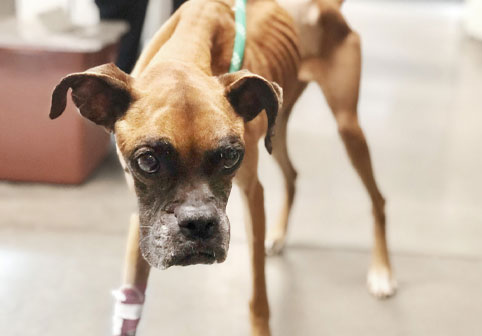New Year’s Eve, Independence Day, and other holidays are exciting events for us humans, but some pets are severely distressed by the noise of fireworks. Remember, dogs’ and cats’ hearing is much more sensitive than ours so those loud booms can be extremely uncomfortable! Here are some tips for keeping your pets safe and calm during the holiday festivities.
First and foremost, it’s important to know how to approach or interact with your pet if they are frightened. Your Dog Advisor stresses the importance of speaking in a calm voice and having non-threatening body posture when interacting with an anxious or frightened pet. You must go at your pet’s pace, as forcing a fearful dog or cat to do something will only make matters worse. If you try to touch or engage your pet before they are ready, it will only cause them more anxiety and fear. Make sure your body language is completely non-threatening. Your pet is already scared, so you don’t want to frighten them even more! Appear relaxed, approach them from an angle instead of head-on, and speak in a soft voice to let your pet know you are trustworthy.
Keep all pets safely confined indoors on the holidays and the days leading up to them when people may be inclined to set off fireworks. There are many family and group activities that are perfect for pets, but a public fireworks display or any other type of gathering where fireworks will be set off usually isn’t one of them.
It’s best to leave your pets safely indoors, preferably with a radio or TV on at normal volume (too loud makes things worse) to dampen jarring noises. Pets usually kept outdoors should be brought inside as an extra measure of safety.
Never leave your pet in a parked car, even at night during a fireworks display. On a warm day, temperatures inside a vehicle can rise to dangerous levels within minutes. On an 85 degree day, for example, the temperature inside a car even with the windows cracked open can reach 102 degrees within just 10 minutes; after 30 minutes the temperature will reach 120 degrees. Even when the temperature outside is a balmy 72 degrees, the temperature inside your car can rocket to a fatal 116 degrees in less than an hour’s time.
Consult our animal hospital or your veterinarian if your pet is distressed by loud noises like fireworks displays. There are a variety of medications and techniques to help alleviate your pet’s fear and anxiety.
Invest in a Thundershirt. Our shelter has had great success with Thundershirts for our pets who are easily stressed by loud noises and other causes of anxiety. Visit the Thundershirts website to find out more about these great tools.
Ensure your pet is wearing a collar and identification tag with current contact information so you can be reunited quickly if your pet does escape. We also suggest writing your name and phone number in permanent ink on the inside of your pet’s collar, just in case the tags get lost. All pets, even those kept indoors full-time, should wear collars with identification tags at all times. Indoor-only animals can become so frightened during fireworks displays that they take desperate measures to escape the noise, such as breaking through window or door screens.
Microchip your pet with your current contact information registered with the chip company. This gives your pet the best chance of being identified and returned to you. Our animal hospital offers microchipping for just $30.
If your pet does become lost, visit our Lost and Found Pets page for tips on what to do.

